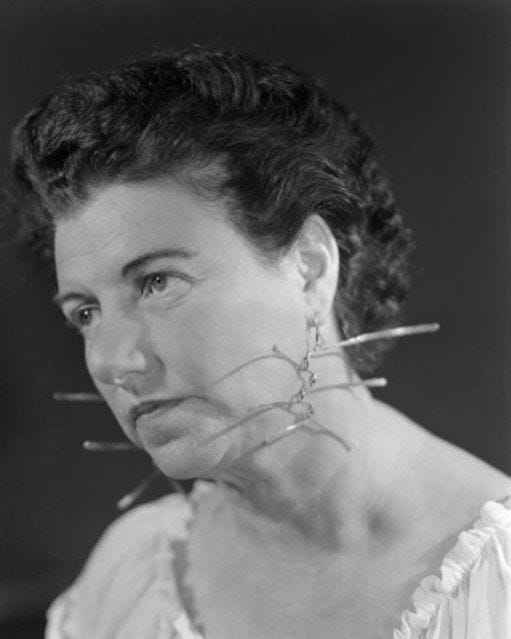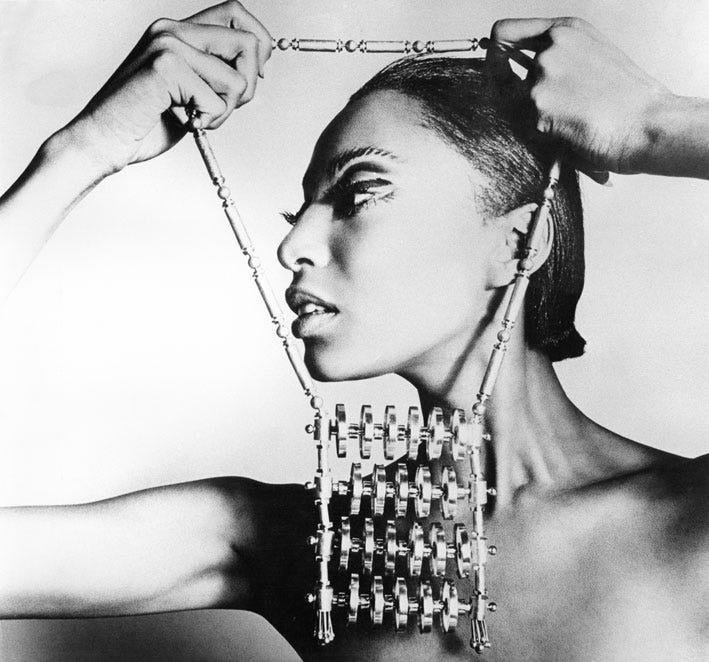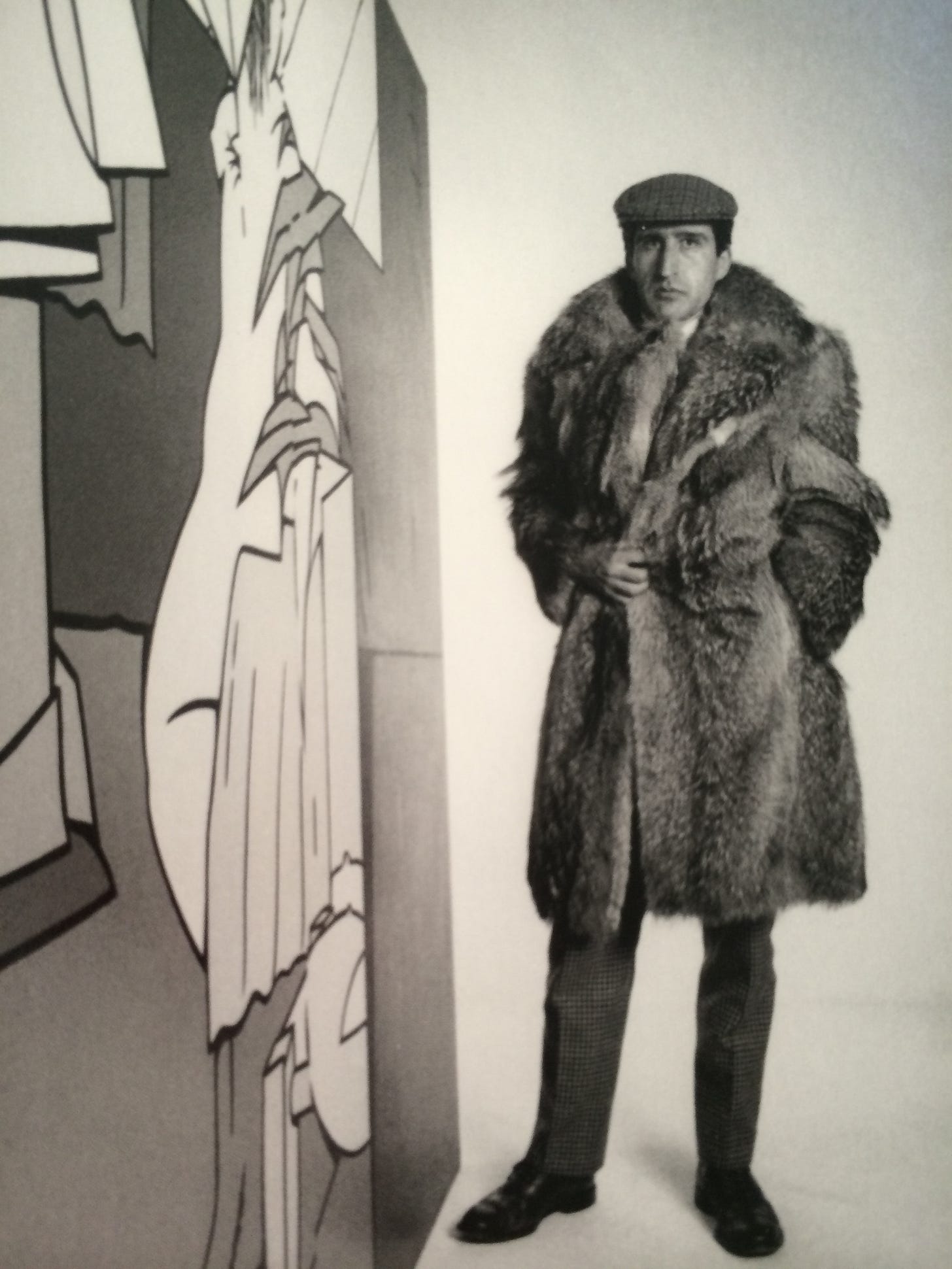Not all that glitters is gold...but it may be art
On Peggy Guggenheim earrings and Lucio Fontana's GEM jewels
Peggy Guggenheim used to say “I’m not the only woman in the world who sleeps in a Calder bed, but I am the only one who wears his enormous mobile earrings. Every woman in New York who is fortunate enough to be decorated by a Calder jewel has a brooch or a bracelet, or a necklace.”
Aside from her art collection, Peggy was known to be a great art jewellery enthusiast, adorning herself with the artists she defended, Calder of course but also Tanguy.
At the beginning of the 20th century, the historical avant-gardes included the incredible craftmanship of jewellery making into art, paving the way for the whole strand of artist jewellery.
I, in no way, claim to have a complete look at the trend, but here are a few of my favourite (Italian) artists who, you may not have known, also created jewels:
The Pomodoro brothers, passionate goldsmiths
Brothers Arnaldo and Giò Pomodoro were no strangers to jewellery making, in fact alongside their art, sculpture, architecture, stage and graphic design studies they were both trained goldsmiths, in 1956 the two brothers exhibited their jewellery at the Venice Biennale.
Collaborating with Milan-based goldsmith duo Giancarlo Montebello and Teresa Pomodoro (GEM), they founded a unique workshop in 1967 that focused on producing jewellery from recognized sculptors and painters which included pieces of Max Ernst, César, Matta, Niki de Saint Phalle and Lucio Fontana in limited editions - realizing one of the first experiments in industrial serial production.
Arnaldo started experimenting in the goldsmithing field in the 1950s, he drew the designs and then used the age-old technique of fusion in cuttlefish bones which he then worked through the addition of “hammered wires, pieces of material, fine or rough stones”. In his long career, he enjoyed designing mostly one-piece ornaments: necklaces, bracelets, rings, brooches, medals, cufflinks, boxes and even cigarette cases. You may find a whole section dedicated to jewellery in Pomodoro’s Catalogue Raisonné (free online access!) which counts approximately 800 works (!).
Giò’s jewellery design often anticipated the outcomes of his sculptural practice, for which he is universally known: from the 1960s study of emptiness and linear tensions, the 70s geometric forms and mechanical elements to the 80s elaborate enamels and whimsical vision.
He explored the potential of form and material through the casting of gold hollowed out in negative from cuttlefish bones, resulting in particular textures on the surfaces. Using both yellow, white and pink gold as well as various gems, his work results in organic forms that narrate the transition from figurative to Informal.
Wearing space - Lucio Fontana
Lucio Fontana's jewellery designs draw upon his concetto spaziale series. In 1967, Fontana began making jewellery under the influence of the Pomodoro brothers, collaborating with GEM goldsmiths to produce four designs: the Elisse Concetto Spaziale (Cut bracelet) in two configurations, the Anti-Sofia necklace and Anti-Sofia bracelet. Realized simultaneously these works operate in conversation with one another.

The first editions of all four items were made in silver, in quantities of 200. These editions were not signed or numbered and were not conceived as 'precious' jewels. In contrast, the second editions were numbered and signed although the editions of the Elisse Concetto Spaziale and the Anti-Sofia bracelets were never fully realised.
Ugo Mulas was extremely impressed with the designs and offered to photograph the jewellery at no charge - the photos were later published in American Vogue.
Since Fontana’s death, no more pieces have been made, thus making the few in existence rare (and expensive) examples of Fontana's jewellery making.
Consagra’s diamonds brooches and futuristic masks
Pietro Consagra’s jewellery (we talked about him here) shows the same rigour and abstract signs of his artistic works. He started in 1959 by making brooches with Mario Masenza in Rome, these were true artworks, in no way inferior to his large-scale sculptures.
The gold and silver surfaces were sometimes paved with diamonds like this brooch he created in 1947 and that was exhibited in Germano Celant's show The Italian Metamorphosis 1943-1968. In 1969 he created, with goldsmith GEM, some outstanding ornamental masks, Ornamenti per viso, in gold and coral.
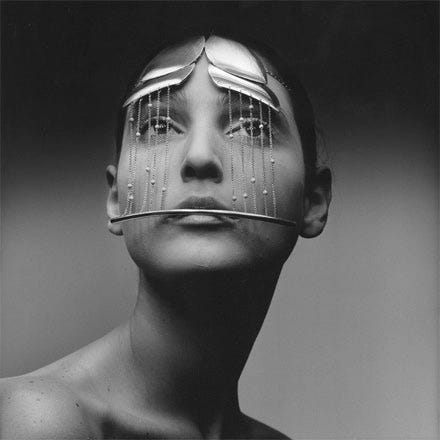
Giuseppe Uncini and his vicious hobby
"Making jewellery, my vice," said artist Giuseppe Uncini. His first piece of jewellery was created in 1958 and it was made out of curiosity in the workshop of a dentist friend who used the lost-wax casting technique for his work. While his artistic work is brutalist, rough and raw often including concrete as a material, his jewellery is delicate and threadlike enhancing the sacrality of gold.
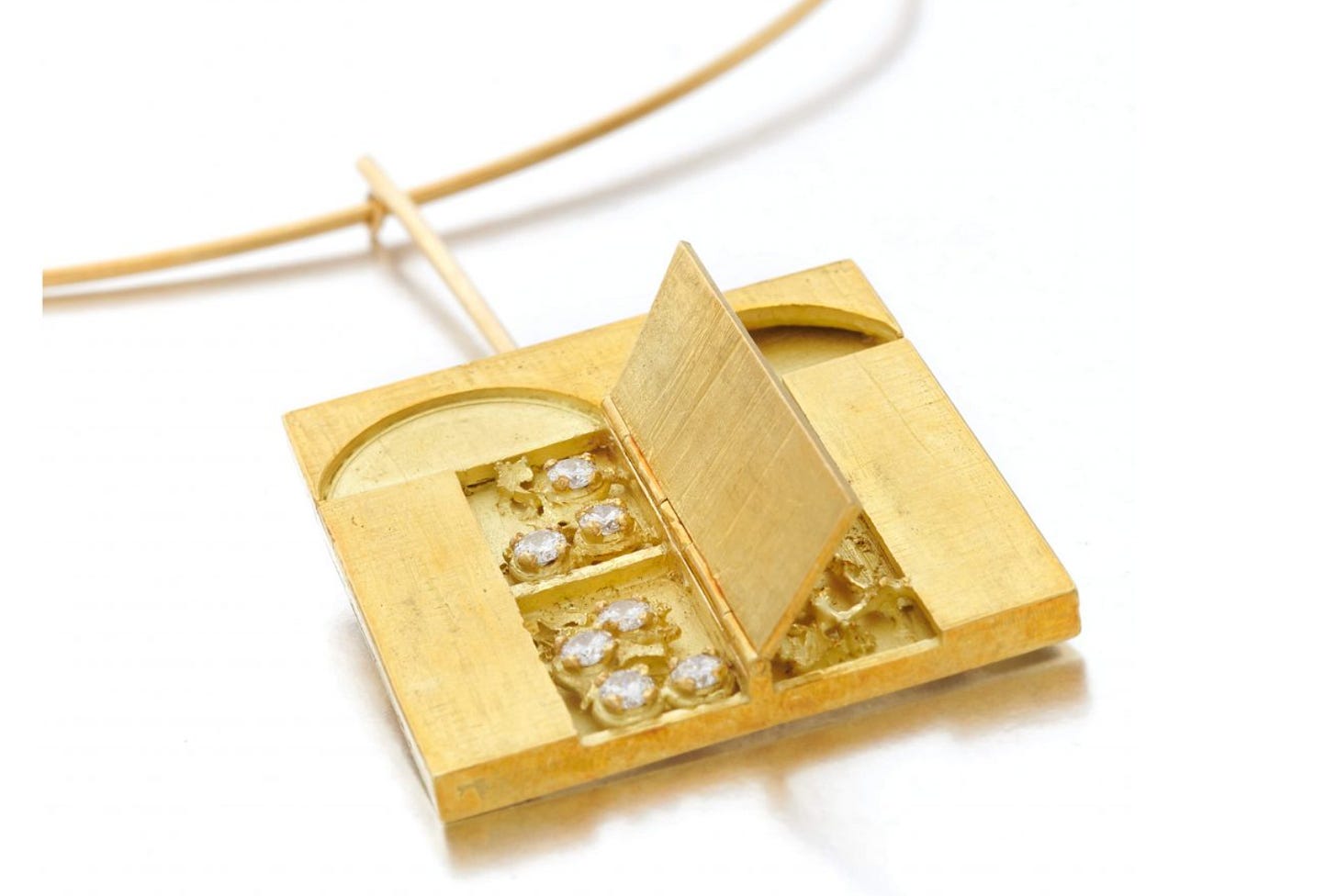
Also collaborating with Masenza, his diamond necklace from the Dimore series, echoes his work Porta aperta con ombra commissioned in 1968 by Palma Bucarelli and exhibited as a division of two rooms in the National Gallery of Modern Art in Rome.
That is all for today’s newsletter! I hope you enjoyed the selection, until next time
Alice




